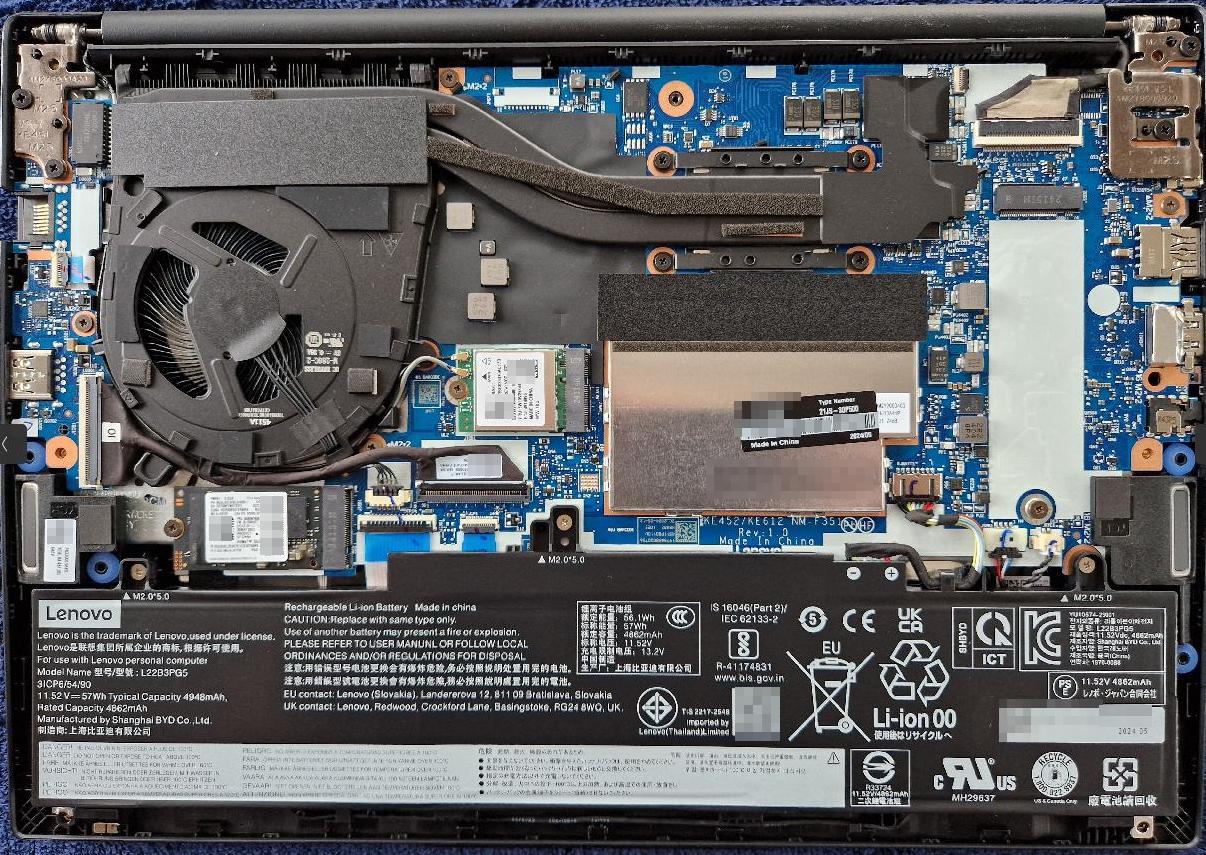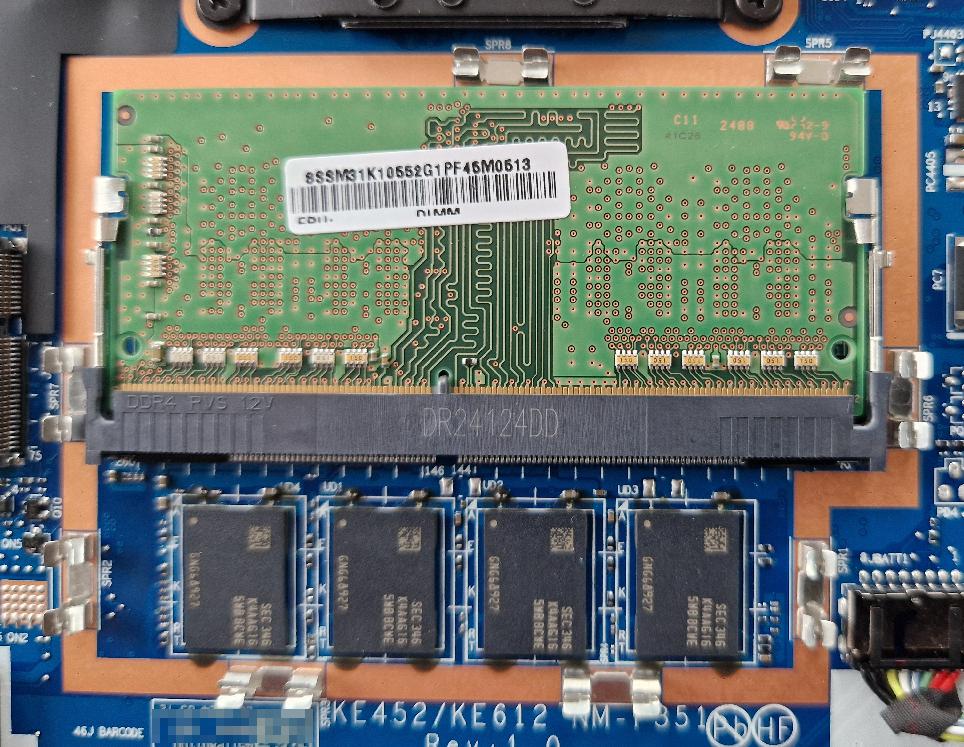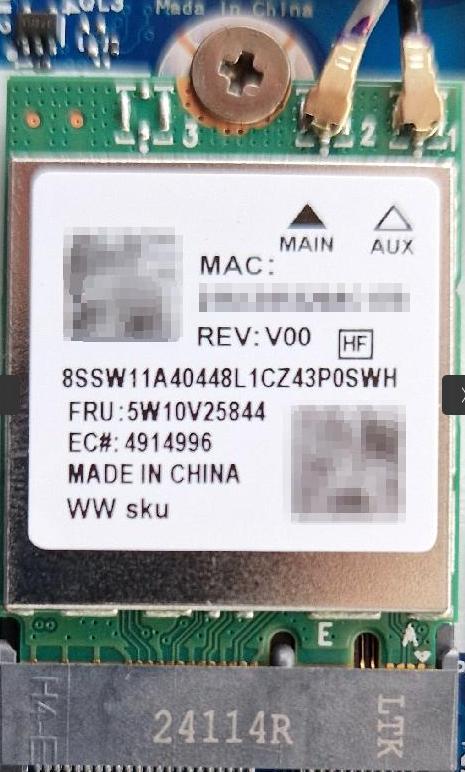Recently I got myself a new ‘spare’ notebook from the entry range of the Lenovo Thinkpad series, a Lenovo E14 AMD Gen 5 for 600 euros (21JS-SOP500, production date 2024/05). Notebookcheck already reviewed the device about a year ago and there’s already the Gen 6 version of the E14 on the market. In other words, it’s not the latest model. While the price difference to the latest model is still around 150-200 euros, the specs look pretty similar. So I don’t think I’m missing much here. In previous years, buying a relatively new notebook and running Linux on it was always a bit of a gamble and sometimes required manual driver installation or replacement of a cheap and not very well supported Wi-Fi PCI card for something with better performance and Linux support. So how about this time around?

Spoiler: To my great pleasure, everything worked straight out of the box with Ubuntu 22.04 and a Linux 6.8 kernel. Even the low end Realtek Wi-Fi PCI card worked, at least at first… But there were two quirks I’m not quite happy about, so read on for the details.
RAM and SSD

The E14 AMD Gen 5 came with 16 GB of RAM, with 8 GB soldered onto the mainboard, an additional 8 GB on a replaceable DDR4 RAM module in a slot, and a 512 GB small form factor NVMe SSD. An additional full length NVMe SSD slot is also available, and as I bought the notebook without an operating system, I removed the short NVMe SSD and replaced it with a full length 1 TB NVMe with a pre-installed Ubuntu 22.04 and kernel 6.8. Without any changes in the BIOS, it detected the NVMe’s password protection, and after typing in the password, it booted to the desktop as expected.
Display
One major change in recent years in the mid- to high-end notebook market was the move from a 1920×1080 to a 1920×1200 pixel display. 120 Pixel doesn’t sound like much, but in practice it does make quite a difference, including the reduction of the bevel height above and below the screen. I like this display format and would not want to buy a notebook anymore that came with anything less.
Wi-Fi and Networking

As this E14 is an AMD model, there are no Intel components inside, so I was a bit worried that particularly the Wi-Fi card could make some trouble. So I made sure that I could replace it if required before the purchase. At first, everything looked fine, the Realtek 802.11ax Wi-Fi 6 chip worked out of the box. The card has two RX and two TX chains, and against my Fritzbox Wi-Fi 5 router, I could achieve around 500 Mbps throughput in both uplink and downlink with an iperf3 server in my network. This is comparatively little compared to the 700 Mbps in both directions I can get with a higher end notebook over the same channel. While I could have lived with that, the Wi-Fi chip driver failed after a couple of hours and the device vanished from the PCI bus. Only a reboot would help. So I guess Realtek is out again, and an Intel Wi-Fi card has to go in. More about this is a follow up post.
Suspend, Resume and Power Consumption
Another tricky point in the past when it came to Linux on notebooks was suspend/resume. At some point in time, Lenovo Thinkpad notebooks supported two different suspend/resume procedures, and one could change them in the BIOS. This time around I didn’t even look into the BIOS and just gave it a try. Again, to my positive surprise, suspend/resume in the more recent ‘s2idle‘ mode worked out of the box. Power consumption during suspend state is minimal, perhaps in the range of 0.5 – 1% per hour. On par with my other Thinkpads.
Processor, Performance and Power Consumption
Most reviews put the processor and performance on top, but Linux hardware support was obviously more important to me, but let’s come around to it now. My E14 came with an AMD 7330U CPU with 4 cores and 8 threads, i.e. similar to the Intel i3 CPU category. The notebook ran through my ffmpeg video decoding/encoding performance test in 7 minutes and 7 seconds in ‘balanced’ power mode, and 6 minutes 51 in ‘performance’ mode. In balanced mode, the test only ran 17 seconds slower than on my high end Lenovo T14. In performance mode, however, it was significantly slower by 1 minute and 40 seconds. Having said that, the performance is way up on the positive scale, no issue here.
In balanced mode, the notebook could draw 20 watts for the processor continuously, and 30 watts when in performance mode. No power or performance step downs were observed during the the test run. That’s good to know because in the past, cooling control was sub-optimal on other notebooks and with older Kernels. This required manual tweaking. On this notebook with kernel 6.8, there were no issues with performance and power consumption out of the box. How nice! Also, fan control worked without any tweaking.
And another important power consumption point: In idle state with the display backlight at 60%, power consumption is 4.5 Watt, a very good value!
USB Ports
Budget notebooks usually come with a limited number of USB ports. This notebook has 2 USB-C and 2 USB-A ports, a nice upgrade from earlier models. As per the datasheet, one USB-C port supports the slower USB 3.2 Gen-1 (5 Gbps), while the second port supports USB 3.2 Gen-2 (10 Gbps). The later is important to transfer data quickly to and from external high speed SSDs. For comparison: My higher end Lenovo T14, also a 2023 model, comes with one USB 3.2 Gen-2×2 port that supports 20 Gbps. But I’d say, for a 2023 mid-range notebook like this, then Gen-2 support for 10 Gbps is acceptable!
Bluetooth
Also, Bluetooth worked out of the box with my Logitech M650L Bluetooth mouse, including suspend/resume and switching the mouse off and on again. No tweaks required, so nothing more to say here, it just works. This is good to know, but I will replace the Realtek combined Wi-Fi / Bluetooth card anyway, so it doesn’t matter too much.
Camera and Microphone
Apart from the Wi-Fi issue there is one other thing I was not quite happy with: The two microphones to the left and right of it at the top of the screen are a bit strange. The sound quality is good, but they are very quiet. In OBS, the microphones in my other notebooks generate an input level around -40 dBm when the room is quiet, and a level of around 0 dBm when I’m talking. On this notebook, the microphone always stays close to 0 dBm but no background noise is noticeable. My voice in OBS is clear but not very loud. I can increase the volume of the microphone past the 100% position in Ubuntu when OBS is running, but that just leads to distortions rather than a louder input. I tried a number of things but the behavior did not change. So I wonder if this is a hardware limitation!? So for people that are often in conference calls and don’t want to use a headset with a microphone or an external camera with microphone, this might be somewhat of a showstopper.
Summary
So here we go, apart from the microphone and the Wi-Fi, this notebook works great with Ubuntu 22.04. The order for an Intel Wi-Fi card is out (25 euros), which should fix the Wi-Fi issue as well. In combination with an external camera/microphone or headset/microphone, the notebook should then work quite nicely with Linux!